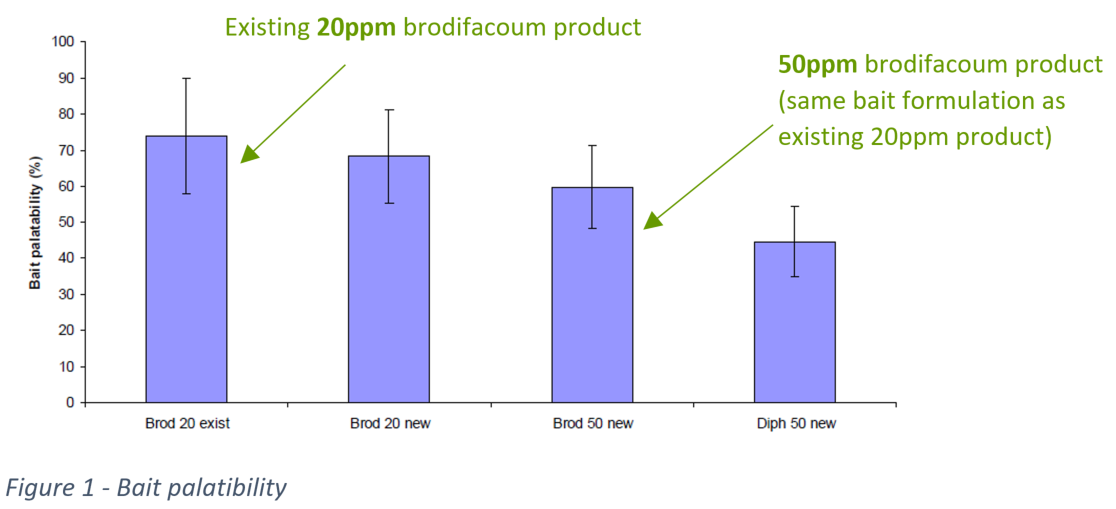
Recently the European Union member states have agreed to reclassify anticoagulant rodenticides as ‘toxic to reproduction’ based on the recommendation from European Chemical Agency. Any rodenticide product with an active substance concentration of 30ppm or more will need to carry the warning sign “may damage the unborn child”. A common rodenticide, brodifacoum, is most often used at 50ppm (0.005%) around the world.
It’s predicted that one of the flow on effects from the reclassification will be that most manufacturers will re-formulate their existing products to offer lower concentration versions.
Interestingly, manufacturers in the UK are wary of lessening the concentration due to the ‘reduced effectiveness’ of the bait products. However, Orillion has always manufactured its primary brodifacoum product with a 20ppm concentration, with the same effectiveness as a 50ppm product.
Why do we use 20ppm?
In 2008 we commissioned research to test if alternative concentrations and toxins compared to our existing product, Pestoff® Rodent Bait 20R (20ppm), had improved palatability or effectiveness.
The results showed that there is no advantage to increasing the concentration of brodifacoum from 20ppm to 50ppm. Although not significant, the palatability and time to death was more favourable in the 20ppm bait than the 50ppm baits.


Pestoff® Rodent Bait 20R has been used successfully in island eradication projects on 200 islands in 20 countries, including Campbell Island and Macquarie Island – each over 10,000ha in size.
No obvious benefits to using higher concentration product
Bait effectiveness is impacted by the method of application, environmental factors, and bait composition, as well as toxicity and palatability, but in the case of the rodenticide brodifacoum, it’s a matter of having a solid baiting strategy, not a stronger concentration of toxin (when comparing 20ppm to 50ppm options).
At this stage Australia and the UK are continuing to use a higher concentration product with no added benefits to effectiveness, but with longer perseverance in the environment – the question is, why?
